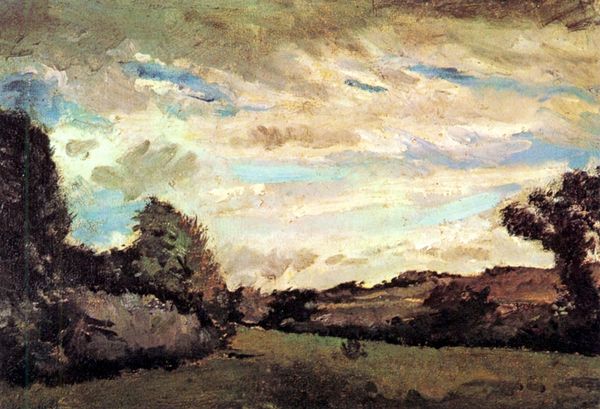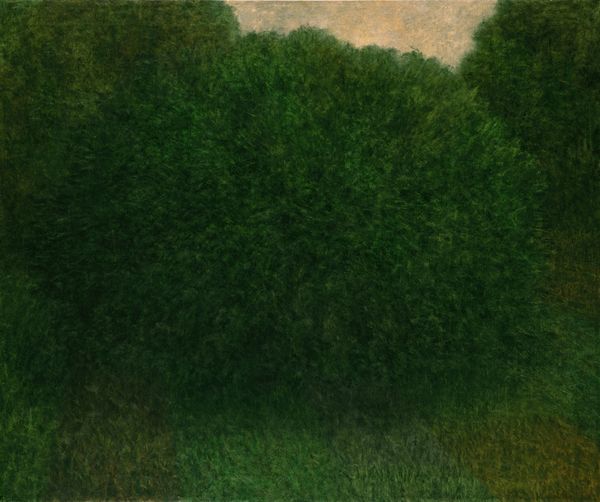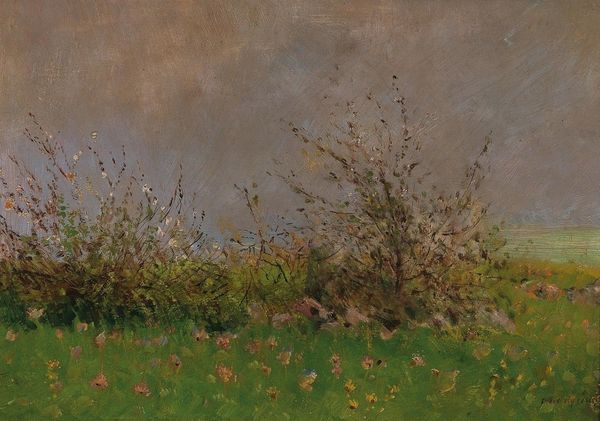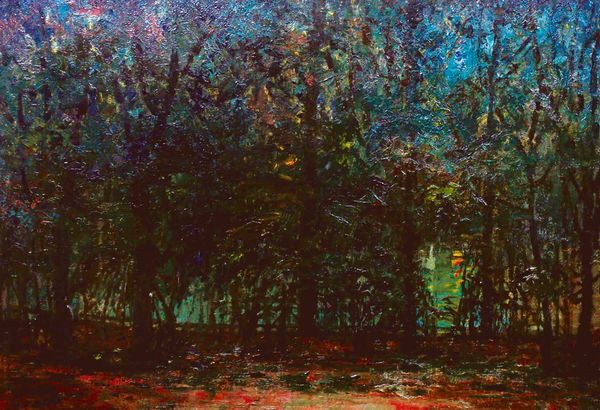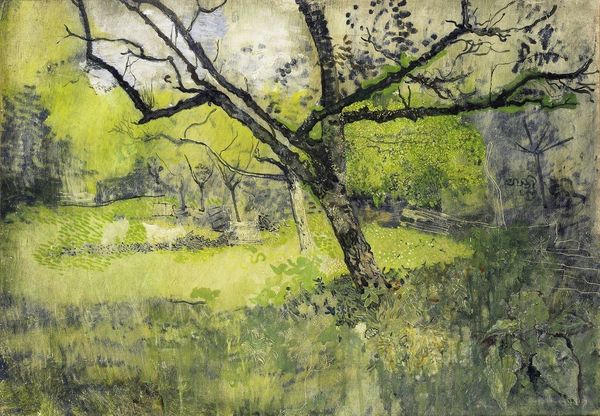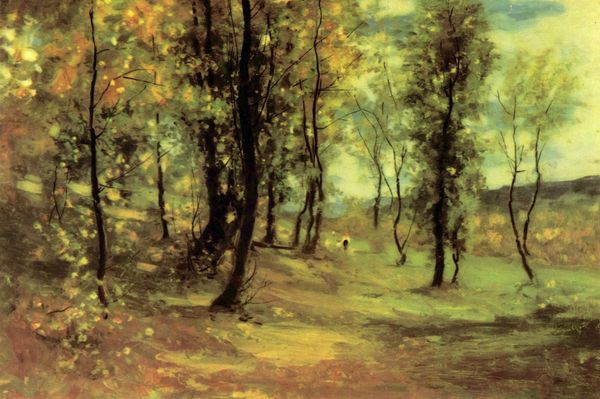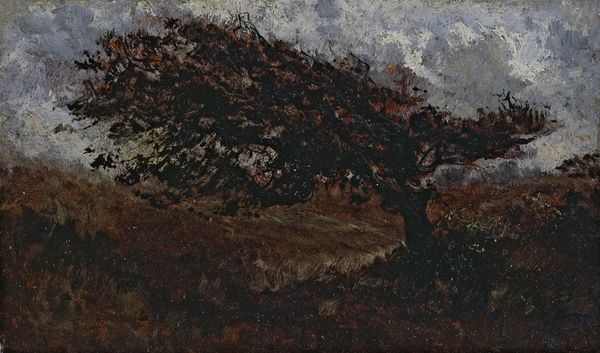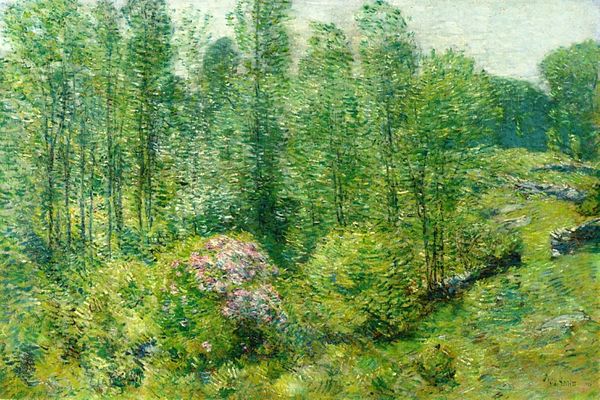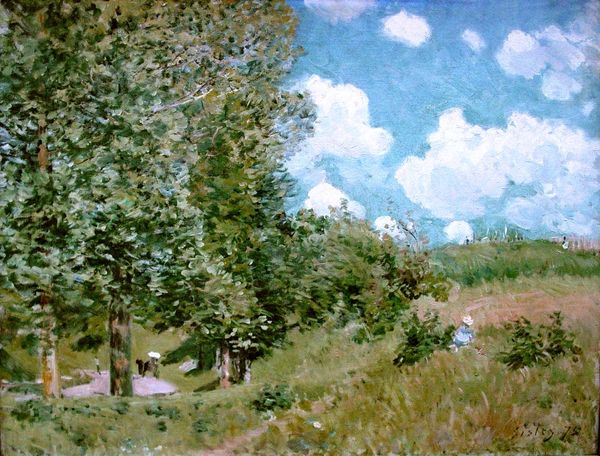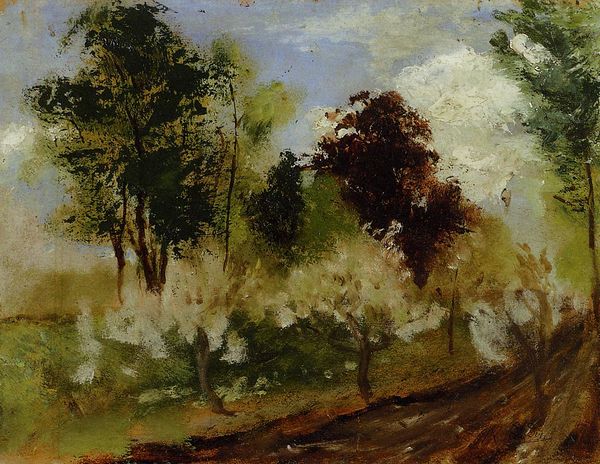
painting, plein-air, oil-paint
#
impressionistic
#
sky
#
painting
#
impressionism
#
plein-air
#
oil-paint
#
landscape
#
impressionist landscape
#
cloud
#
cityscape
#
nature
Dimensions: 81 x 60.5 cm
Copyright: Public domain
Curator: This is Claude Monet’s “Spring,” painted in 1875. It is an oil-on-canvas painting done in his distinctive impressionistic style. Editor: It’s evocative—almost overwhelmingly so! The play of light feels so fresh, the composition practically bursts with the sensation of life emerging. Curator: Monet often painted en plein air. Considering the time, what kind of pressures and possibilities do you think this method presented in creating the feeling conveyed through brushstroke and composition? Editor: The lack of sharply defined forms and the emphasis on color, especially the cool blues and vibrant whites, truly suggest an ethereal, transient moment. He captures the essence of springtime bloom so viscerally. Curator: The context is important. Monet's move towards landscapes reflected the changing face of French society—urbanization pushing against nature. We have here, a representation of spring perhaps reflecting cultural anxiety toward industrial production. How can the viewer's relationship to the landscape be impacted when considering his methods of production, say against Bouguereau, who relied upon highly regimented studio practices? Editor: Good point! When considering purely the aesthetic qualities however, it feels deeply personal, not only through the color but the softness of his strokes—suggesting transience and the sensory experience of the awakening world, don’t you agree? Curator: It’s a push and pull between industry, nature, the artist and you, the viewer. It's the very consumption and labor, brought together to reflect this "spring." Editor: Agreed. It truly does bring the energy of spring into view. Curator: Indeed. Thank you for that perspective. Editor: And thank you. It’s been illuminating.
Comments
No comments
Be the first to comment and join the conversation on the ultimate creative platform.
